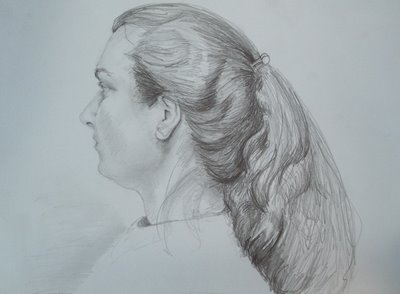Drawing

Drawing can take many forms. Drawings can record appearances using line. Or they can be largely tonal in their effects, creating patterns of light and shade. A drawing can be very evocative or sketchy. It can impress us with detailed and very descriptive qualities that persuade us that we are looking at something "real." But drawings are always a bit artificial in certain wonderful senses: their monochromatic qualities take the image already one remove from ordinary vision -- since of course we see actual things in color. Somehow the removal of color (as in moody black and white photos) from the very outset introduces an element of mystery. And sometimes, also, the sketchiness of images can make them somehow visually poetic.
I like drawing because of its simplicity. It is a most portable art form. An artist needs at a minimum a little notebook, a pencil and a pocket to store these tools. Alternately, a drawing can be very detailed, very vivid. It can include so much visual information that it sometimes competes with painting in its complexity.
Because of its directness and economy of means, it can be a flexible tool for wondering to oneself about visual questions. You might find yourself looking at something and pondering some quality -- light, dark, a contour, a structure. And you just put down ideas about the thing in careless lines: you have a drawing.

<< Home